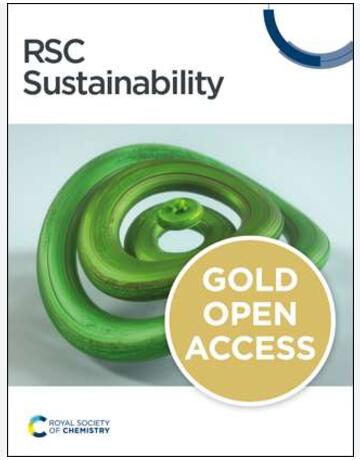利用基于变换的动态光谱指数和随机森林估算玉米冠层氮含量
IF 3.3
3区 环境科学与生态学
Q2 ENVIRONMENTAL SCIENCES
引用次数: 0
摘要
监测玉米健康状况对实现农业可持续发展至关重要。冠层氮含量(CNC)对玉米叶片蛋白质和叶绿素的合成至关重要,因此对玉米的生长和产量有重大影响。在本研究中,我们基于基于变换的动态光谱指数(TDSI)和随机森林算法(RF)开发了一种 CNC 光谱估算模型,从而实现了对玉米冠层叶片 CNC 的快速监测。共收集了 60 个玉米冠层叶片样本和相应的田间冠层光谱。随后,冠层光谱数据通过集中化转换(CT)、一导数(D1)、二导数(D2)、去趋势转换(DT)和最小-最大归一化(MMN)方法进行转换。使用三种波段组合方法(波段差、波段比和归一化差)构建 TDSI。最后,选择最优的 TDSI 作为自变量,测量的 CNC 作为因变量,建立基于射频算法的 CNC 光谱估计模型。结果表明:(1)TDSI 能更准确地表征玉米的 CNC,其相关系数比原始光谱带高约 102%。(2) 最佳 TDSI 包括 TDSI1247,1249CT-RI、TDSI625,641CT-NDI、TDSI540,703D1-RI、TDSI514,540D1-RI、TDSI514、530D1-DI、TDSI540,697D1-NDI、TDSI970,1357D2-DI、TDSI523,1031D2-NDI、TDSI617,620DT-RI 和 TDSI2109,2127MMN-NDI。(3) 基于最优 TDSI 的数控光谱估算模型和射频算法的精度指数 R2 和 RPIQ 分别为 0.92 和 4.99,与传统的数控光谱估算模型相比(基于 R2 值),最大提高了约 67.27%。本研究为快速准确地估算玉米中的 CNC 提供了一种方法,有助于农业的可持续发展。本文章由计算机程序翻译,如有差异,请以英文原文为准。
Estimating the Canopy Nitrogen Content in Maize by Using the Transform-Based Dynamic Spectral Indices and Random Forest
The monitoring of maize health status is crucial for achieving sustainable agricultural development. Canopy nitrogen content (CNC) is essential for the synthesis of proteins and chlorophyll in maize leaves and, thus, significantly influences maize growth and yield. In this study, we developed a CNC spectral estimation model based on transform-based dynamic spectral indices (TDSI) and the random forest (RF) algorithm, enabling the rapid monitoring of CNC in maize canopy leaves. A total of 60 maize canopy leaf samples and the corresponding field canopy spectra were collected. Subsequently, the canopy spectra data were transformed using centralization transformation (CT), first derivative (D1), second derivative (D2), detrend transformation (DT), and min-max normalization (MMN) methods. Three types of band combination methods (band difference, band ratio, and normalized difference) were used to construct the TDSIs. Finally, the optimal TDSI was selected and used as the independent variable, and the measured CNC was used as the dependent variable to build a CNC spectral estimation model based on the RF algorithm. Results indicated that (1) TDSIs can more accurately characterize the CNC in maize, with a correlation coefficient approximately 102% higher than those of raw spectral bands. (2) The optimal TDSIs included TDSI1247,1249CT-RI, TDSI625,641CT-NDI, TDSI540,703D1-RI, TDSI514,540D1-RI, TDSI514,530D1-DI, TDSI540,697D1-NDI, TDSI970,1357D2-DI, TDSI523,1031D2-NDI, TDSI617,620DT-RI, and TDSI2109,2127MMN-NDI. (3) The CNC spectral estimation model based on the optimal TDSIs, and the RF algorithm achieved accuracy indices with R2 and RPIQ of 0.92 and 4.99, respectively, representing a maximum improvement of approximately 67.27% over the traditional CNC spectral estimation model (based on the R2 value). This study provides an approach for the rapid and accurate estimation of CNC in maize, contributing to the sustainable development of agriculture.
求助全文
通过发布文献求助,成功后即可免费获取论文全文。
去求助
来源期刊

Sustainability
ENVIRONMENTAL SCIENCES-ENVIRONMENTAL SCIENCES
CiteScore
6.80
自引率
20.50%
发文量
14120
审稿时长
17.72 days
期刊介绍:
Sustainability (ISSN 2071-1050) is an international and cross-disciplinary scholarly, open access journal of environmental, cultural, economic and social sustainability of human beings, which provides an advanced forum for studies related to sustainability and sustainable development. It publishes reviews, regular research papers, communications and short notes, and there is no restriction on the length of the papers. Our aim is to encourage scientists to publish their experimental and theoretical research relating to natural sciences, social sciences and humanities in as much detail as possible in order to promote scientific predictions and impact assessments of global change and development. Full experimental and methodical details must be provided so that the results can be reproduced.
 求助内容:
求助内容: 应助结果提醒方式:
应助结果提醒方式:


